No, We Haven’t Solved The Drake Equation, The Fermi Paradox, Or Whether Humans Are Alone

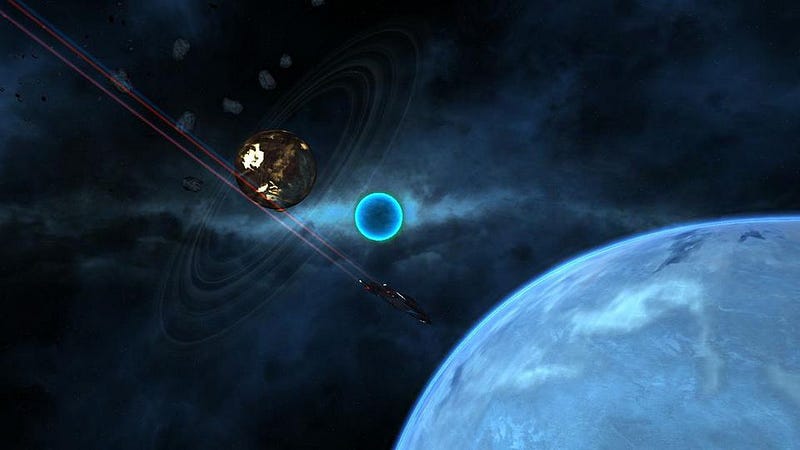
The absence of evidence is not evidence of absence, but substituting wild speculation for evidence isn’t even science.
In 1950, Enrico Fermi famously asked the question, “Where is everybody?” It wasn’t because his retinas detached; it was because he was curious about the lack of visits by extraterrestrials. If life in the Universe is ubiquitous, the argument goes, then surely the signs of it should be everywhere? Over the past 60+ years, we’ve developed a number of possible explanations for this puzzle, known today as the Fermi Paradox.
On the surface, this seems like a reasonable question to ask. There are billions of stars in the galaxy, many of which have Earth-like planets, and if Earth is fairly typical, some of these may have developed intelligent life. Many of us on Earth are working to develop interstellar travel, and even though the galaxy is 100,000 light years across, we’ve been around for many billions of years. If life is common, then where is everyone? A new paper claims to have the answer, but their conclusions are highly suspect.
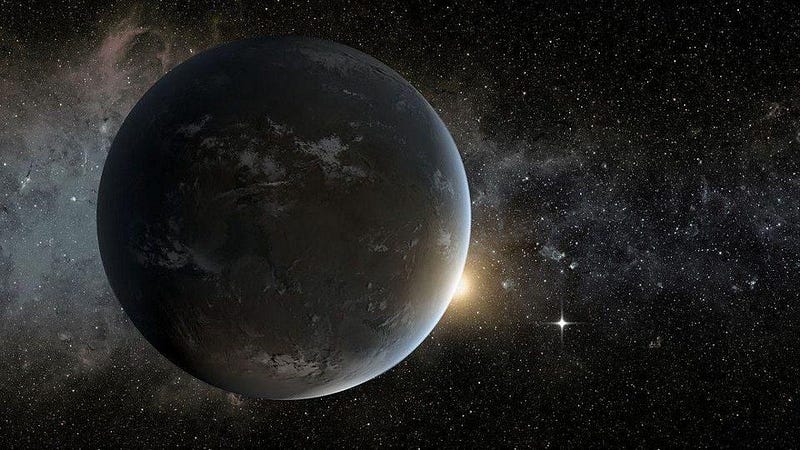
Clearly, if they’re out there, they haven’t shown up around these parts or left surefire signs of their existence. Our searches for alien civilizations — such as with giant radio dishes and projects like SETI — have all come up empty, with no signatures of an alien intelligence out there. UFOs are likely to have earthly explanations, not extraterrestrial ones. Exoplanetary searches, exemplified by NASA’s Kepler mission, have turned up thousands of planets beyond Earth, many of which are Earth-like in size, teaching us that there are literally billions of chances for Earth-like life in our galaxy alone. Yet no life beyond Earth has ever been found; not on those worlds, nor on any of the other worlds in our Solar System.

Water, light, heat, organic molecules, and the ingredients for life are indeed everywhere. But aliens of any type have yet to show themselves. For all we have hard evidence for, Earth may be it for life in the entire Universe.
If that sounds pessimistic to you, or, as Carl Sagan put it, “an awful waste of space,” you’re not alone. Back in the early 1960s, Frank Drake put forth an equation that allowed us to make an estimate of the number of spacefaring, intelligent alien civilizations out there — in either our galaxy or the entire observable Universe — at any point in time. Although we knew very little about the various parameters in it, the Drake Equation is still used by many today to estimate the number of potential civilizations we can communicate with in space.
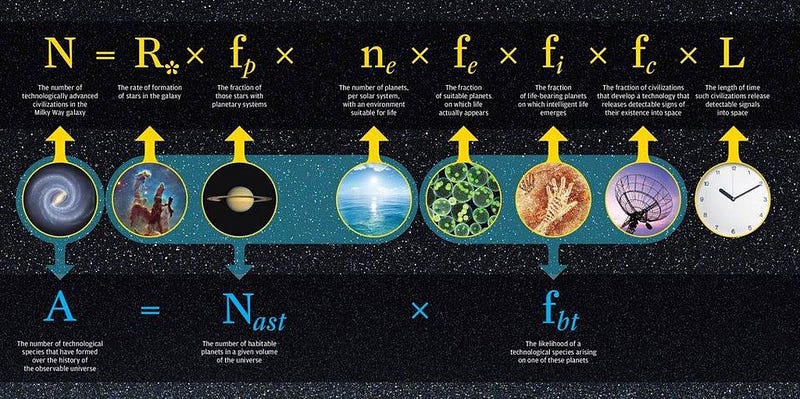
While we can make better estimates, today, of quantities like:
- the number of stars in each galaxy,
- the number of galaxies in the Universe,
- the fraction of stars that are like our Sun,
- and the fraction of Sun-like stars with potentially habitable, Earth-sized planets,
there are still a few enormous unknowns that are out there.
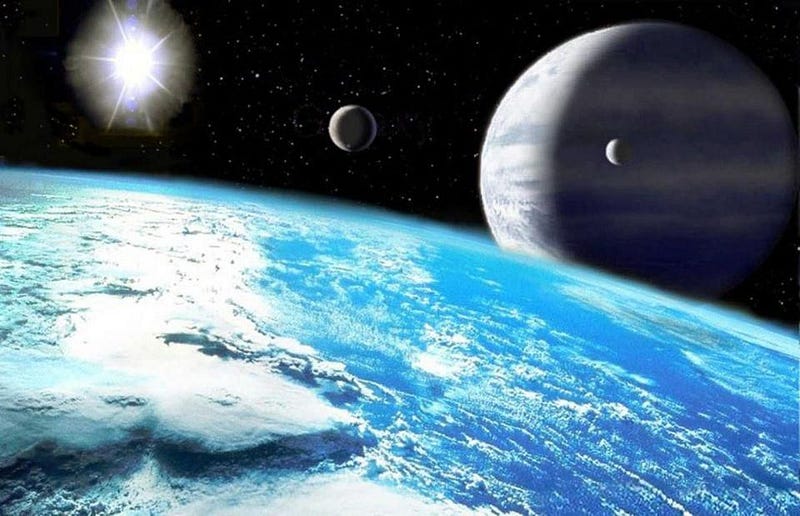
In particular, there are a few steps that we simply don’t know how frequently they occur. They clearly occurred here on Earth, but we haven’t, as of yet, discovered anyplace else in the Universe where even one has occurred. These are the steps that lead us from non-living molecules to the complex, differentiated, intelligent species that we fancy ourselves to be.
This equates to two (in the Drake equation) unknowns that are absolutely necessary to reach the ultimate goal of intelligent aliens:
- the likelihood of creating life from non-life on an Earth-like world,
- and the likelihood of that life evolving into an intelligent, communicative, and possibly interstellar species.
In terms of raw probability, we have no idea how likely or unlikely these events are.

Sure, there are plenty of sensible things we can say about them. We can talk about the experiments we’ve done to create organic molecules from raw, inorganic ingredients. We can discuss the complex organic molecules we find in interstellar space or in meteorites. We can mention the tantalizing hints that worlds in our Solar System house about watery pasts, sub-surface liquid oceans, and potentially fossilized microbes. And we can look at the fact that, if we extrapolate the genetic information encoded in extant organisms back to the formation of the Earth, they indicate that what we consider “life” to be may have had its origin billions of years before our planet came into existence.
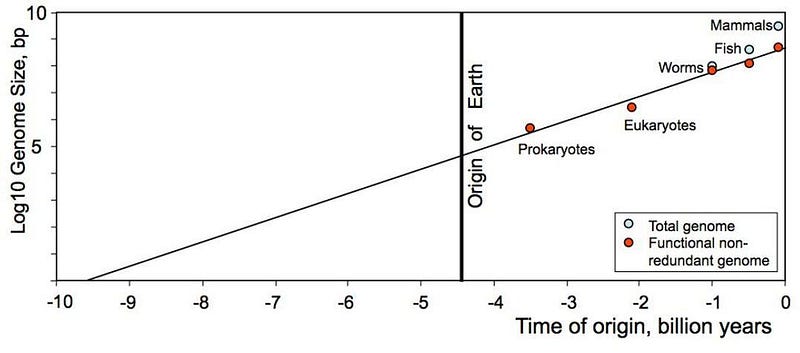
But none of that is reasonable for calculating a probability for the likelihood of life arising from non-life, given an Earth-like world. The odds may be extremely high, like a few percent, as some have estimated. But the odds could be catastrophically low: one-in-a-million, or even worse. Life could be incredibly rare. The fact that life exists on Earth does not mean we didn’t win the cosmic lottery. We cannot draw a reasonable conclusion from a sample size of one.
And things get even worse if you try and extrapolate that second conditional probability: given life, what are the odds that it becomes intelligent, sentient, spacefaring and communicative across interstellar distances?
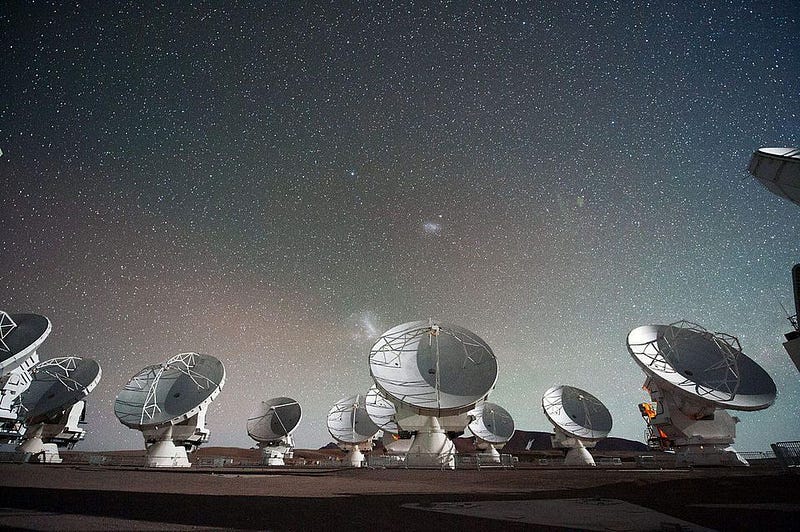
Again, we have a sample size of one. There are many steps that life took on Earth to bring us to this point, including mass extinctions, selection pressures, a changing environment, asteroid strikes, and much, much more. For over four billion years on this world, there was nothing we’d call “intelligent” by human standards. For over half a billion since the Cambrian explosion, it’s only for the past 200,000 or so that a species-of-interest existed on Earth: less than 0.05% of that time. And remember: we are the great cosmic success story. We are the winners of the cosmic lottery.

The new paper that is getting a lot of buzz right now, by Anders Sandberg, Eric Drexler, and Toby Ord of Oxford, is titled Dissolving the Fermi Paradox, and their main argument is this:
Our main result is to show that proper treatment of scientific uncertainties dissolves the Fermi paradox by showing that it is not at all unlikely… for us to be alone in the Milky Way, or in the observable universe.
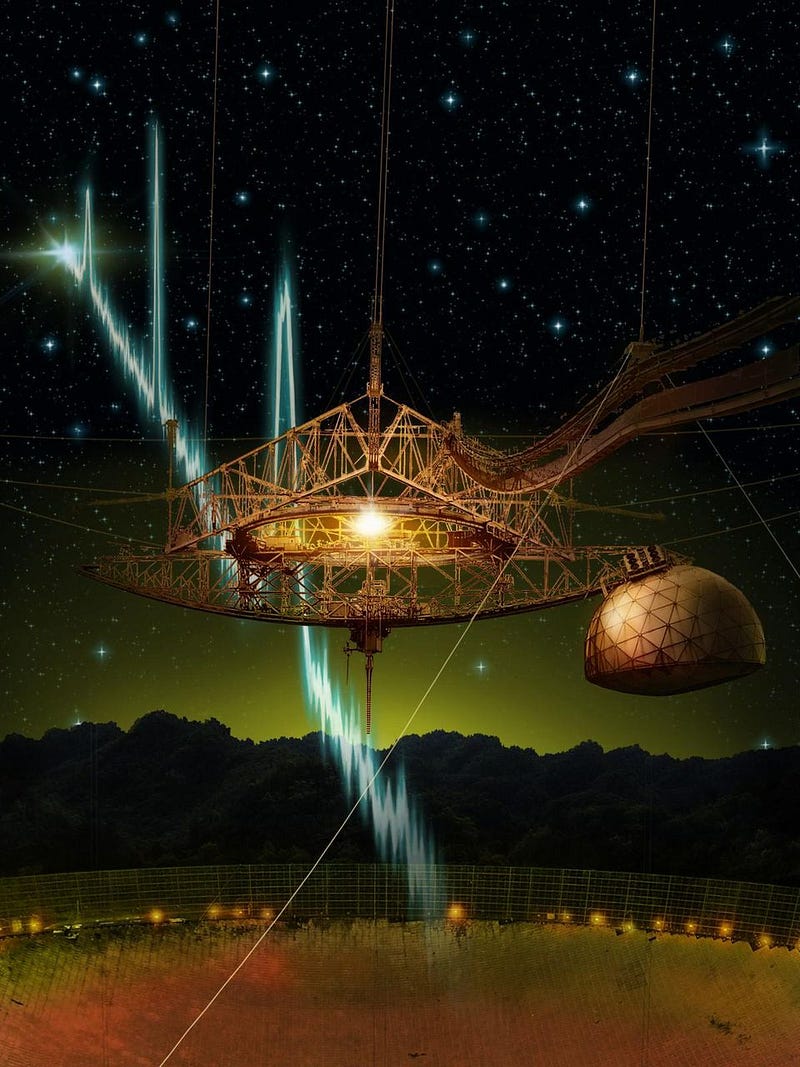
This is not a surprise to anyone who has thought about the consequences of drawing sweeping conclusions from a position of insufficient evidence and ignorance. If you haven’t thought about it, the main results is that you probably shouldn’t do it if you care about your conclusions being based in facts.
You cannot simply state, “here are my estimates for these quantities” and then calculate how many civilizations you expect. What are the probability ranges for your estimates? How robust are they? What evidence backs them up?
The answer is “none.”

Despite the replacement of point estimates with probabilistic distributions, as the authors impose, there is still no evidence that we can say anything sensible about these likelihoods. In the absence of evidence, theorists aren’t theorizing based on sound science; they’re simply making numbers up. The authors state their methodology as such:
In this paper, we shall look at two different ways of extending this approach beyond a toy model — generating probability distributions for the parameters of the Drake equation based on the variation in historical estimates and doing so based on the authors’ best judgment of the scientific uncertainties for each parameter.
Unfortunately, this falls prey to what I call the first law of computer science: garbage in, garbage out. Historical estimates and the authors’ judgments are no substitute for the data we need, and do not have.

No amount of fancy probabilistic analysis can justify treating guesswork and wishful thinking as having any sort of scientific weight. Applying scientific techniques to an inherently unscientific endeavor, such as inventing estimates to unknowns about the Universe, doesn’t make it any more scientific. The opposite of knowledge isn’t ignorance; it’s the illusion of knowledge.
It’s still possible that life, and even intelligent life, is ubiquitous in our galaxy and the Universe. It’s also possible that one is common and one is uncommon, or that both are extraordinarily rare. Until we have more information, don’t be fooled by the headlines: these aren’t brilliant estimates or groundbreaking work. It’s guessing, in the absence of any good evidence. That’s no way to do science. In fact, until we have better evidence, it’s not science at all.
Ethan Siegel is the author of Beyond the Galaxy and Treknology. You can pre-order his third book, currently in development: the Encyclopaedia Cosmologica.





